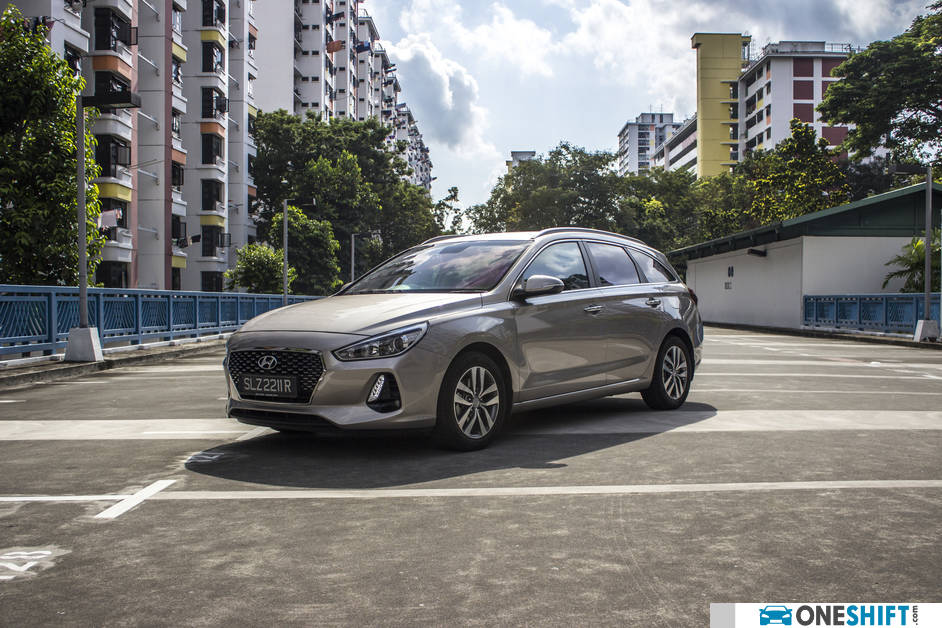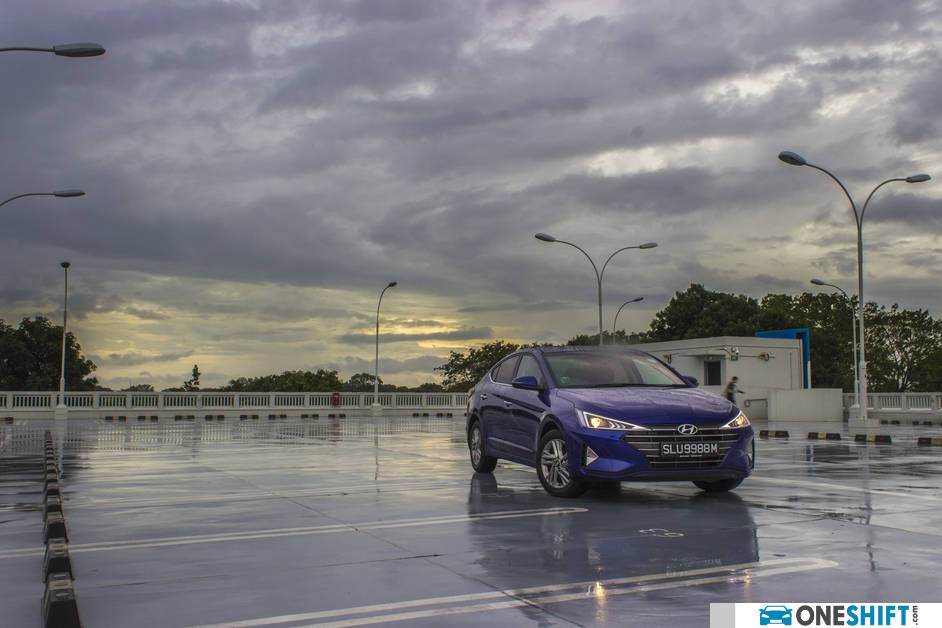Why the Koreans Have Truly Caught Up
You watch their dramas, listen to their music, and buy their appliances, so why not their cars? This is Oneshift’s look at why BBQ isn’t the only Korean combination of oil, smoke and hot metal you should be excited about!


You watch their dramas, listen to their music, and buy their appliances, so why not their cars? This is Oneshift’s look at why BBQ isn’t the only Korean combination of oil, smoke and hot metal you should be excited about!
Let's just cut to the chase. Cars are a big-ticket item here so you buy something that speaks about you or reflects an image you wish to portray. Korean brands have long suffered in this department, with a history of lacklustre products, but in the automotive sector, things are always changing, and our experience with their latest offerings show that they are just as capable as any of the other nations at building quality cars. Here is our breakdown of why you should seriously consider a Korean-brand car for your next purchase.
This may come as a bit of a surprise but the Korean brands are a powerhouse of build quality. J.D Power frequently ranks Korean brands amongst the highest for their Initial Quality Survey, wherein verified owners report on any problems or defects with their new cars within the first 90 days of ownership. Better scores mean that less cars roll out of the factory with said defects or design flaws.
Some standout facts from the latest data for 2019 include the fact that Genesis ranks highest among all nameplates, and has improved its top-quality ranking by 5 less problems experienced per 100 vehicles to reach of score of 63, while Kia, at 70, and Hyundai, at 71, have also improved to rank second and third, respectively. This is in spite of the fact that scores across the industry remain unchanged from 2018, marking the first year without improvement since 2014. The three South Korean brands have also earned six of the 22 segment awards for models with the fewest problems, and 16 out of the 18 models from Hyundai Motor Co. rank among the top three in their respective vehicle segments.

Hyundai i30 offered here by Komoco with a 7 year warranty. Would you sell your product with a 7 year warranty if you had no confidence in its build quality?
The same survey also found that Korean-brand vehicles also tend to have fewer problems with infotainment systems and other electronic components, a typically poor performing segment for other manufacturers, so for all those that always run into issues synching phone and car, but still want to stay connected, shopping Korean looks like a safer bet.
For some clue as to how much has Kia alone has done to raise the quality of its products, imagine this: Kia was ranked 30th place when this same survey was done in 2005. Can you even name 30 different car brands? Since then their market share in the U.S. has raised from 1.62 percent to 3.53 percent. Globally, the Hyundai-Kia group is now the third largest manufacturer by volume - behind only Toyota and Volkswagen Group. Surely they couldn't have got this far if they were not doing something right. Who can say where they will be in the next 15 years?
Just like those Korean supermarkets around Novena, I’m not talking about a substandard product at discount prices sort of value. Buying a Korean-brand car here will actually net you a good, market-competitive product that still manages to undercut the competition. Check out the Hyundai Avante in ‘Elite’ spec which comes with seat cooling, and with the base car starting from only S$62,999*, for example. But if keeping cool is not your first priority in a car we have also lined up a few other offerings that do well in other areas. Compare them against the prices for other brand competitors and I am sure you will still find the Koreans offering good value on their products…

Hyundai Avante represents good value motoring. Hyundai clearly set on raising perceived quality across the range
So you are a fan of that mad spicy instant ramen, have the reaction times to rival the best MOBA players and need to drive faster than Korea’s internet speed. Well the Koreans have now also begun to deliver high-performance vehicles for us motor heads, and initial reviews have been favourable of the Hyundai i30 N. With 246bhp and 353Nm of torque at its disposal, the i30 N not only pips that most popular German hot-hatch competitor for power, but does it at a lower starting price as well, starting from only $144,999*. With plenty of grip and very respectable body control, combined with a ride that still feels fairly supple; and decent cornering balance, the i30 N is a very attractive first offering from a more performance-oriented Hyundai.

The Hyundai i30 N is a good forary into the performance hatch segment.
But if hatchbacks are not your flavour, there also is the Kia Stinger. With prices starting at $161,999* for the 244hp, 353Nm 2.0 GT-Line, and $201,999* for the 3.3 GT with 370bhp and 510Nm, the Stinger certainly punches above its weight for cost per horsepower, and delivers all of the typical handling characteristics you might expect of a rear-wheel drive saloon: strong traction, uncorrupted steering and a natural sense of balanced cornering poise.

Kia's Stinger a good value proposition for those that must drive a rear-wheel drive platform, regardless of which engine you get.
The current crop of Korean performance options are certainly enticing, but here is what I think matters more: with Hyundai Group’s poaching of top talents from BMW’s own hallowed ‘M’ Division, including names such as Thomas Schemera, Albert Biermann and Fayez Abdul Rahman, Hyundai are clearly intent on developing a proper performance division for themselves, and it is not unreasonable to think that we could soon see not only more performance-oriented offerings from the Hyundai-Kia Group, but to also have more sporty setups filter down through the rest of their mass-market range, as per how BMW builds agile handling into even their base spec 3-series and the X3.
If you are more a fan of the high-tech exports from Korea, and only shop for the latest electronics and appliances bearing names like Samsung and LG, there are now plenty of cars for you to get into as well. The nation has long been known as a global leader in electronics and tech development, and their cars show it. Tech enthusiasts might want to consider the new Hyundai Kona EV, with the latest in car tech such as a lithium-ion polymer battery pack, instead of the conventional nickel-metal hydride systems, as well as adjustable regenerative braking, to ensure that as little energy is wasted while you commute. With 201bhp and a massive 395Nm of torque available, prices start at $163,999* for the Long Range versions, which I think is fairly decent considering it is capable of completing the century sprint in 7.1 seconds.

Kona EV sports impressive specs against similarly priced pure electric rivals from Europe.
Once again, we look to future developments and while China will continue to have the lion’s share of the EV market and house battery production facilities for the foreseeable future, the Korean suppliers are also well in there competing for market share: LG Chem currently supplies batteries to the Hyundai-Kia group, and is famously going to supply the batteries for Volkswagen Groups’ own electrification efforts, along with being the current supplier for Daimler Mercedes-Benz and Jaguar’s electric vehicles. SK Innovation likewise supplies to both Daimler Mercedes-Benz and the Hyundai-Kia Group, and with Samsung SDI supplying for both BMW and Fiat-Chrysler, it is not difficult to imagine that the Korean manufacturers are well poised to benefit from the latest in battery tech being developed within their own borders.
Thankfully you don’t have to dabble into the confusing world of Korean skincare or gangnam fashion to get a piece of their design and style. Long gone are the days of factory tooling determining design for our Korean cars (don’t google the Hyundai Matrix or Ssangyong Rodius), the current crop of options not only share an identifiable common design language across their respective brands but are also readily sporting some of the smartest exterior designs in their respective segments (definitely do google the upcoming Kia Soul and Hyundai Sonata).

Hyundai building a common design language across all of its SUVs
For a slice of that current design language already available in our showrooms, I would recommend the Hyundai Santa Fe. Its signature cascading grille provides and horizontal front and tail light features do a good job breaking the bulk of the car from the front and back, and it manages that boxy SUV aesthetic without resorting to becoming too fussy the way many other cars clad in plastic fender flares are. With prices starting from $178,999, it too represents good value if you must have a SUV with three rows of seating.

3-Row seating means you can bring an entire K-drama's worth of arguments with you wherever you go

Sharp styling of the KIA Stonic, the brand's entry level SUV is matched by a youthful palette of colours
When the Japanese first started exporting their cars they were mocked for being underpowered and poorly built. Today, brands such as Toyota, Honda and Mazda are amongst those we associate with clever engineering and sound production standards and quality. The Korean brands have likewise managed the same feat, but in only half the time, arguably requiring twice the effort and industry know-how, but ironically also doubling their problem with branding and image. As an informed consumer should you shun a certain brand simply due to public perception alone, when you ought to know better which firms have more momentum behind them?
Regardless of whether you are looking for something with different styling or a maybe even a differently sized vehicle, lookout for what else the Korean brands continue to surprise us with here and here!
*Prices accurate as at 27 June 2019
Credits:


Get the Best Price for your used car
from 500+ dealers in 24 hours

- Convenient and Hassle-Free
- Consumer Protection
Transparent Process
With No Obligation








